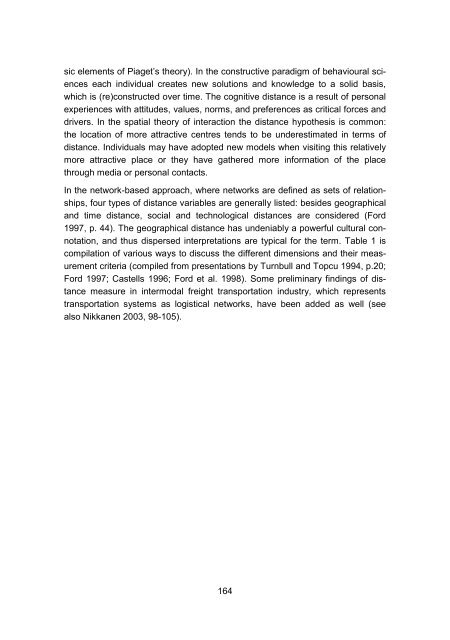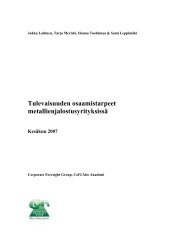849954 sisus
849954 sisus
849954 sisus
Create successful ePaper yourself
Turn your PDF publications into a flip-book with our unique Google optimized e-Paper software.
sic elements of Piaget’s theory). In the constructive paradigm of behavioural sciences<br />
each individual creates new solutions and knowledge to a solid basis,<br />
which is (re)constructed over time. The cognitive distance is a result of personal<br />
experiences with attitudes, values, norms, and preferences as critical forces and<br />
drivers. In the spatial theory of interaction the distance hypothesis is common:<br />
the location of more attractive centres tends to be underestimated in terms of<br />
distance. Individuals may have adopted new models when visiting this relatively<br />
more attractive place or they have gathered more information of the place<br />
through media or personal contacts.<br />
In the network-based approach, where networks are defined as sets of relationships,<br />
four types of distance variables are generally listed: besides geographical<br />
and time distance, social and technological distances are considered (Ford<br />
1997, p. 44). The geographical distance has undeniably a powerful cultural connotation,<br />
and thus dispersed interpretations are typical for the term. Table 1 is<br />
compilation of various ways to discuss the different dimensions and their measurement<br />
criteria (compiled from presentations by Turnbull and Topcu 1994, p.20;<br />
Ford 1997; Castells 1996; Ford et al. 1998). Some preliminary findings of distance<br />
measure in intermodal freight transportation industry, which represents<br />
transportation systems as logistical networks, have been added as well (see<br />
also Nikkanen 2003, 98-105).<br />
164








